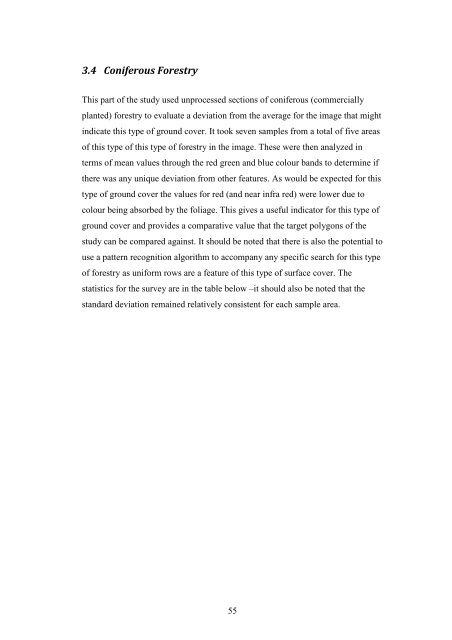You also want an ePaper? Increase the reach of your titles
YUMPU automatically turns print PDFs into web optimized ePapers that Google loves.
3.4 Coniferous Forestry<br />
This part of the study used unprocessed sections of coniferous (commercially<br />
planted) forestry to evaluate a deviation from the average for the image that might<br />
indicate this type of ground cover. It took seven samples from a total of five areas<br />
of this type of this type of forestry in the image. These were then analyzed in<br />
terms of mean values through the red green and blue colour bands to determine if<br />
there was any unique deviation from other features. As would be expected for this<br />
type of ground cover the values for red (and near infra red) were lower due to<br />
colour being absorbed by the foliage. This gives a useful indicator for this type of<br />
ground cover and provides a comparative value that the target polygons of the<br />
study can be compared against. It should be noted that there is also the potential to<br />
use a pattern recognition algorithm to accompany any specific search for this type<br />
of forestry as uniform rows are a feature of this type of surface cover. The<br />
statistics for the survey are in the table below –it should also be noted that the<br />
standard deviation remained relatively consistent for each sample area.<br />
55
















